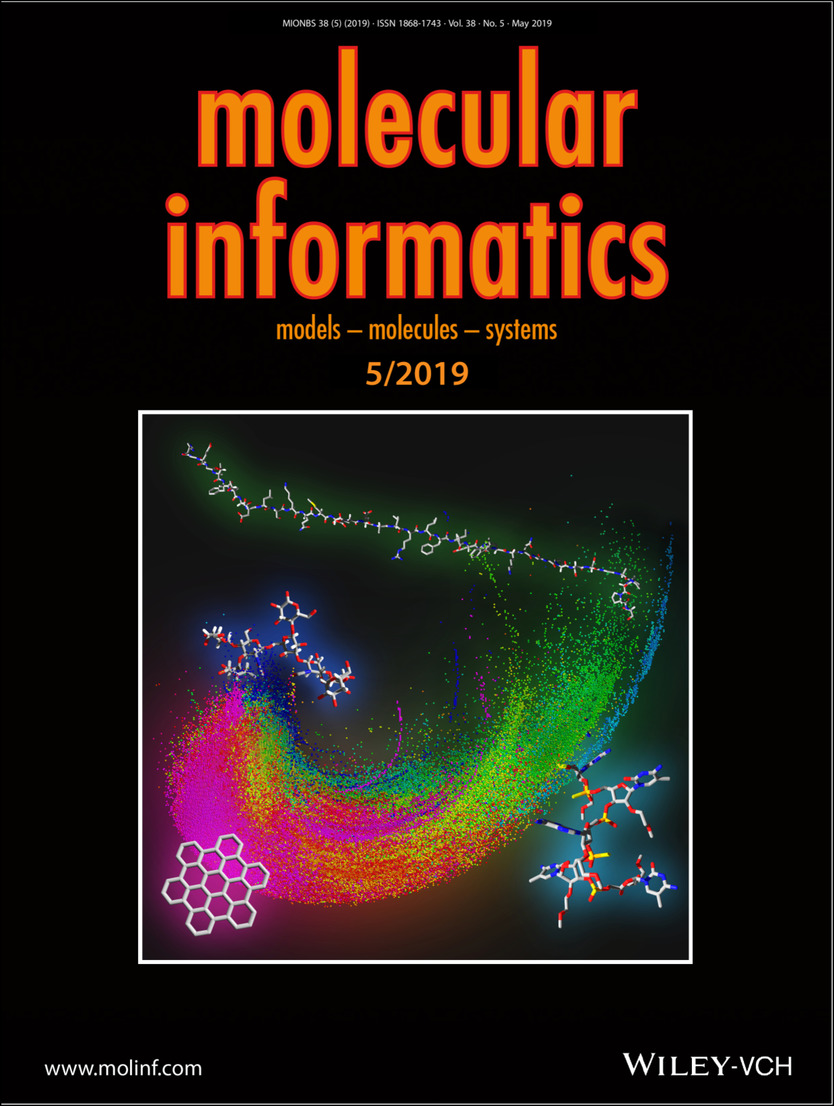Journal Cover: PubChem and ChEMBL beyond Lipinski
The paper PubChem and ChEMBL beyond Lipinski has been published by Molecular Informatics.
Seven million of the currently 94 million entries in the PubChem database break at least one of the four Lipinski constraints for oral bioavailability, 183,185 of which are also found in the ChEMBL database. These non‐Lipinski PubChem (NLP) and ChEMBL (NLC) subsets are interesting because they contain new modalities that can display biological properties not accessible to small molecule drugs. Unfortunately, the current search tools in PubChem and ChEMBL are designed for small molecules and are not well suited to explore these subsets, which therefore remain poorly appreciated. Herein we report MXFP (macromolecule extended atom‐pair fingerprint), a 217‐D fingerprint tailored to analyze large molecules in terms of molecular shape and pharmacophores. We implement MXFP in two web‐based applications, the first one to visualize NLP and NLC interactively using Faerun (http://faerun.gdb.tools/), the second one to perform MXFP nearest neighbor searches in NLP and NLC (http://similaritysearch.gdb.tools/). We show that these tools provide a meaningful insight into the diversity of large molecules in NLP and NLC. The interactive tools presented here are publicly available at http://gdb.unibe.ch and can be used freely to explore and better understand the diversity of non‐Lipinski molecules in PubChem and ChEMBL.
Author(s): Alice Capecchi, Mahendra Awale, Daniel Probst, Jean-Louis Reymond
